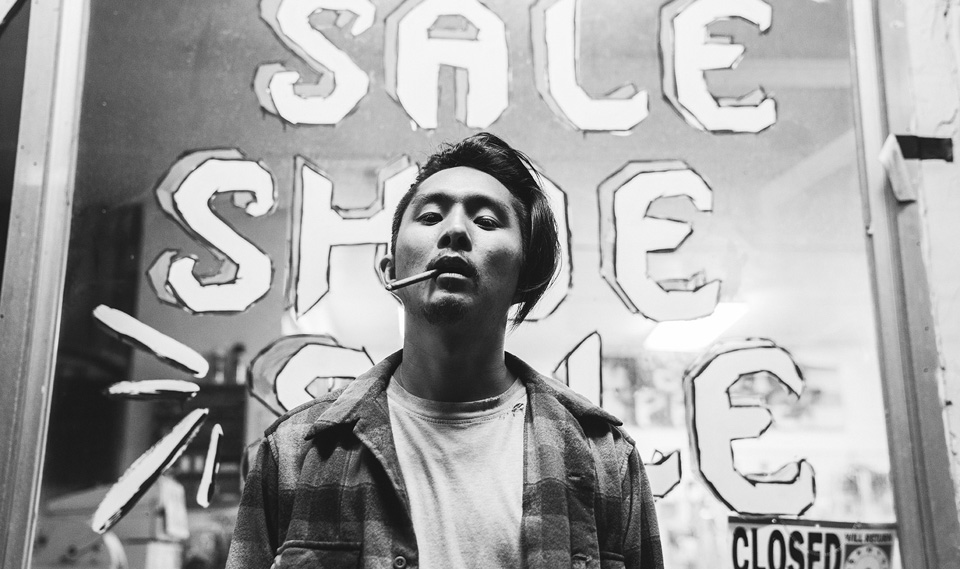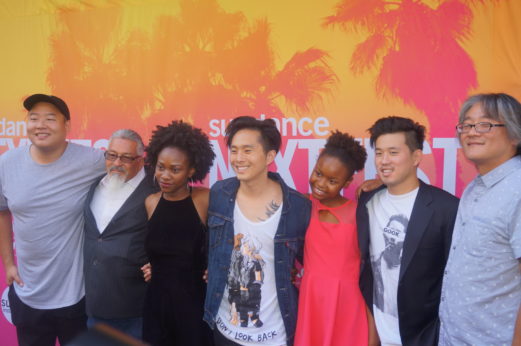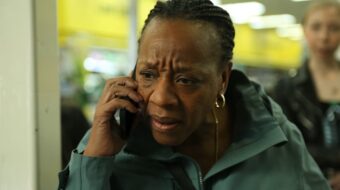
The recent tragic events of Charlottesville, where white supremacists and neo-Nazis descended onto the University of Virginia, inciting hate speech that would eventually lead to the killing of Heather Heyer, the death of two police officers, and the injury of dozens of others, show us that the topic of race relations and racism is an ever-present contentious theme in the United States of America. Throughout history, we have seen this theme reach boiling points that have resulted in uprisings, wars, revolts, and riots.
The film Gook uses the backdrop of one such point in history, the Los Angeles Riots of 1992, to offer a view of the dynamics between Korean Americans and the Black community. By centering the narrative on Black and Asian Americans, as opposed to the often-done white and Black Americans dynamic, the movie gives audiences a powerful slice-of-life perspective into racial relationships not often explored.
Eli and Daniel are two Korean-American brothers who run their late father’s shoe store in a predominantly African-American community of Los Angeles. While Eli is the more focused of the two, he struggles to make ends meet, as the store is some months behind on rent, while Daniel secretly pursues his dream of being an R&B soul singer. The brothers have an unlikely friendship with an 11-year-old Black girl, Kamilla. The film shows a day in the life of these three characters. Yet, the day is different from any other, as four white officers are acquitted for the brutal beating of Rodney King, sending tensions in L.A. to a breaking point, thus changing the characters’ lives forever.
The movie is filmed in black and white, yet it’s probably one of the more colorful films coming out this year in regard to characterization and racial representation. Much of the action and focus is centered on the character Eli, played by the film’s director and writer Justin Chon (Twilight, 21 and Over). Yet what makes sullen Eli’s journey the most interesting are the supporting characters around him. Eli seems angry about life for a number of reasons that are eventually revealed in the film, but how we get a sense of who Eli is, is through the dynamics between him and others in the cast. We see this especially with his older brother/younger sister-like relationship with Kamilla, played by Simone Baker. We also see this through his tumultuous relationship with his brother Daniel, played by David So. These relationships, along with others, such as Kamilla’s with her older siblings, played by Omono Okojie and Curtiss Cook Jr. respectively, are deployed across an ensemble of layered characters, even if we only see some of their layers briefly.
A powerful aspect of Chon’s film is that none of the characters are completely good or bad. Chon explores racial stereotypes and forces the viewer to see the different sides of characters often oversimplified in mainstream entertainment. For example, the older Korean man with the thick accent, who owns the liquor store and seems prejudiced against Black customers, has a story to him, and moments of kindness. Curtiss Cook Jr.’s portrayal of Kamilla’s older brother Keith isn’t relegated to being an angry “thug,” but is allowed to show emotions of hurt and love, even though he is one of Eli’s main antagonists.
Kamilla herself is not just the “sassy” young Black girl with one-liners and attitude, although the young Baker does a wonderful job displaying both. Kamilla serves as a beacon of innocence in the sea of poverty and hardened souls surrounding her. She also serves as a link between the two communities, Korean and Black, represented between the Korean brothers and her own siblings. All of these characters can be looked at individually, but also as symbols of the complex nature of human interaction, especially when it comes to looking at race. Gook gives no obvious answers, but does show the ways in which people from different walks of life can be affected by prejudice, trauma, and poverty in very similar ways.
Which brings me to another aspect of the film that stood out as well: All the main characters are working poor, even if they aren’t aware of it. They all are struggling to makes ends meet, although both sides are shown as believing the other side is taking advantage of and profiting off the other. Perhaps it’s my inner socialist leanings, but I thought the movie made subtle nod to the class aspect of poverty and how people of color get divided, even though they often face a similar struggle trying to earn enough to live and thrive under a system that profits from exploitation.
The film also succeeds in featuring both heavy and light moments. Serious moments of drama are balanced with humorous ones. The funny moments aren’t throwaways either, but provide different aspects of certain individuals that we might not see if it were one tense moment after another.
Some characters I wish we had gotten to know better, such as Kamilla’s older sister Regina (Okojie). While it was a breath of fresh air to have young Kamilla centered in the narrative of Eli’s story, it would have been significant to learn a bit more about Regina’s feelings regarding her troubled brother and younger sister. The viewer has to guess what she feels because Regina is never given a scene to express herself. Then again, with a running time of 94 minutes, and themes such as Korean/Black race dynamics, intergenerational conflict, and the L.A. riots, some things are bound to be left out.
Written, directed, and starring Korean-American actor Justin Chon, the independent film has been showcased at the New York Asian American Film Festival and the San Francisco CAAMFest. It won the NEXT Audience Award at the 2017 Sundance Film Festival. The movie was screened at the Sundance NextFest on August 12, in anticipation of its Los Angeles theatrical release on August 18. After the screening, famed director Ava DuVernay (Selma, Queen Sugar, A Wrinkle in Time), did a Q&A with Chon to discuss the movie’s racial themes, along with the craft of filmmaking.

When asked by DuVernay about the racial slur “gook,” a derogatory term used against people often of Korean, Filipino, or Vietnamese descent, as the title of the film, Chon answered, “It’s a chance to educate people. The title? Let’s talk about it [and what it means].” Chon described how when news about the film first got out he received many calls from older Koreans asking him “how dare you?” use the word for his project. Chon explained, “‘Gook’ in Korean actually means ‘country.’ ‘Mi gook’ directly translated means ‘beautiful country.’ During the Korean War, and later during the Vietnam War, white G.I.’s twisted that word to have a negative meaning for Asians.” Chon went on to say that it was a chance to clarify the word’s origins, and to face that history head on.
Chon also spoke to the creation of roles for actors of color, in particular Asian actors, and the lack of representation. “People who say there are no talented Asian actors? Fuck that. We’re here,” Chon expressed.
On the surface, Gook may give viewers déjà vu of another famous, filmed in black and white movie about race. I’m referring to Spike Lee’s classic Do the Right Thing. There are some similarities, such as the prevalent use of the word “fuck” (Gook may actually have Lee’s film beat in surpassing the 120 count on its usage), but Chon creates a unique story that stands on its own. It was an ambitious project to take on so many complicated themes, and the end result is a good film that is touching and thoughtful. It should be seen in order to gain perspective on a tumultuous moment that centers people of color in all the major roles—which is a welcome change to the usual Hollywood narrative.
Gook opens theatrically in Los Angeles on August 18, and in select cities nationwide on August 25.







Comments